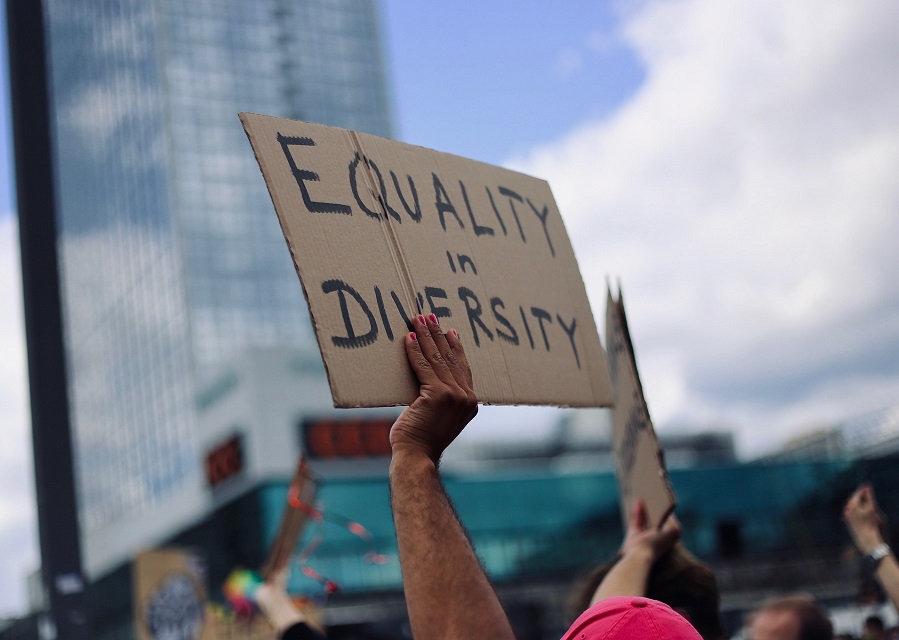
Hello Dear Reader(s),
With me lies the honor to open the next part of this discussion around power dynamics, Information and Communication Technologies for Development ( ICT4D), Communication for Development (C4D) and aid.
I’m Sylvi(a). Our About Us-page and first blog post have a bit of information about me and also more on our intention for this blog.
Let me use this space here to showcase my personal endeavor during this project and, I hope, spark a conversation.
If you have thoughts and opinions to share after you have read my post, I’ll be happy to meet you in the comments. Find the comment box at the bottom.
The global public sphere has changed dramatically over the past decades:
A significant part of public discourse now takes place on algorithmically driven platforms owned by a handful of private companies.1
The researchers, Wolf, Lorenz-Spreen and Lehmann, who wrote the quote above, published an interesting study last year. They analised the behaviour of 600000 individual Twitter users. Their findings suggest that, at least on Twitter, our ‘content horizons’ are shrinking. The magnitude of information we receive and activity on the social platform is gradually increasing. This causes the length and intensity we apply, when processing individual topics, to dwindle. Social interactions and information are accelerating. Meaningful long term engagement with subject-matters is deteriorating further. Our attention span seemingly cannot prevail when faced with an (extreme) abundance of information. 1
We have gotten used to algorithms, which inform filters, targeted content, (automated) decision making on our behalf. In the name of monopolisation, profit maximisation and efficiency. The amount of power we have over what we see and how information is presented to us, is very limited indeed and many users, me included, may only have a vague notion of the extent to which this is true. And then it is not just conglomerates, but also governments (which at times act with the same incentives) making use of that.
When we take the enormous drift of many political landscapes and governments worldwide towards authoritarianism of the past decades into account, then the picture gains another layer of depth. These shifts endanger the prospects of continued funding or existence of e.g. humanitarian and developmental work, programs, laws and institutions that protect women as well as minority rights or efforts to try countering and solving environmental crises long term (e.g. political happenings in the United States at present and during the past few decades are an illustrative example).

ICTs function in a way which at times severely limits minority representation and can lead to discrimination. Misrepresented conformity that is rendering actual diversity invisible is often facilitated by automated processes (e.g. automated hiring practices).
It is a fact that the lens, be it an algorithm, the perception of others or our individual perception, determines how we interpret information. The more biased the ‘lens’ is the more difficult it becomes to disentangle underlying biases from truths. In turn, we also know that what we consider true is often subjective and depends on the view point.
So what are the effects of this on Communication approaches for development and social change? What does this mean for aid delivery?
The recurring scandals across the field underline every so often that the aid sector itself is plagued by many issues as well: racism, corruption, sexual exploitation and so on. Despite a manifold of hurdles, institutions and practitioners continuously work towards greater humanitarian goals ‘to do good’, assist and support people in need and to facilitate social change.
What I’m very interested in:
What is going right?
What can we do better in communication approaches to the public and in communities especially?
Can there be equal or equitable benefits from employing new and established information and communication technologies (ICTs), when neither the ability to use them nor access to them are? Also when it’s better to search for better fitting alternatives. A keyword here is localisation.
Why and how do certain patterns of exploitative practices translate to new types of media? The keywords here are for example techno-colonialism and economy orientation among others. I’ll come back to that in my third blog post.
I won’t realistically be able to fully answer these questions. However, I want to elaborate further why I think that it is important to ask them and point towards solutions with potential.
On the 18th of October, I’ll be back with a report about an online-event regarding ICT4D. See you then and stay tuned on our posts.
There are two more topics yet to be introduced!
1Wolf, F., Lorenz-Spreen, P., Lehmann, S. (2021). Successive cohorts of Twitter users show increasing activity and shrinking content horizons. arXiv. Retrieved, October 9th, 2022 from: https://doi.org/10.48550/arXiv.2108.08641

